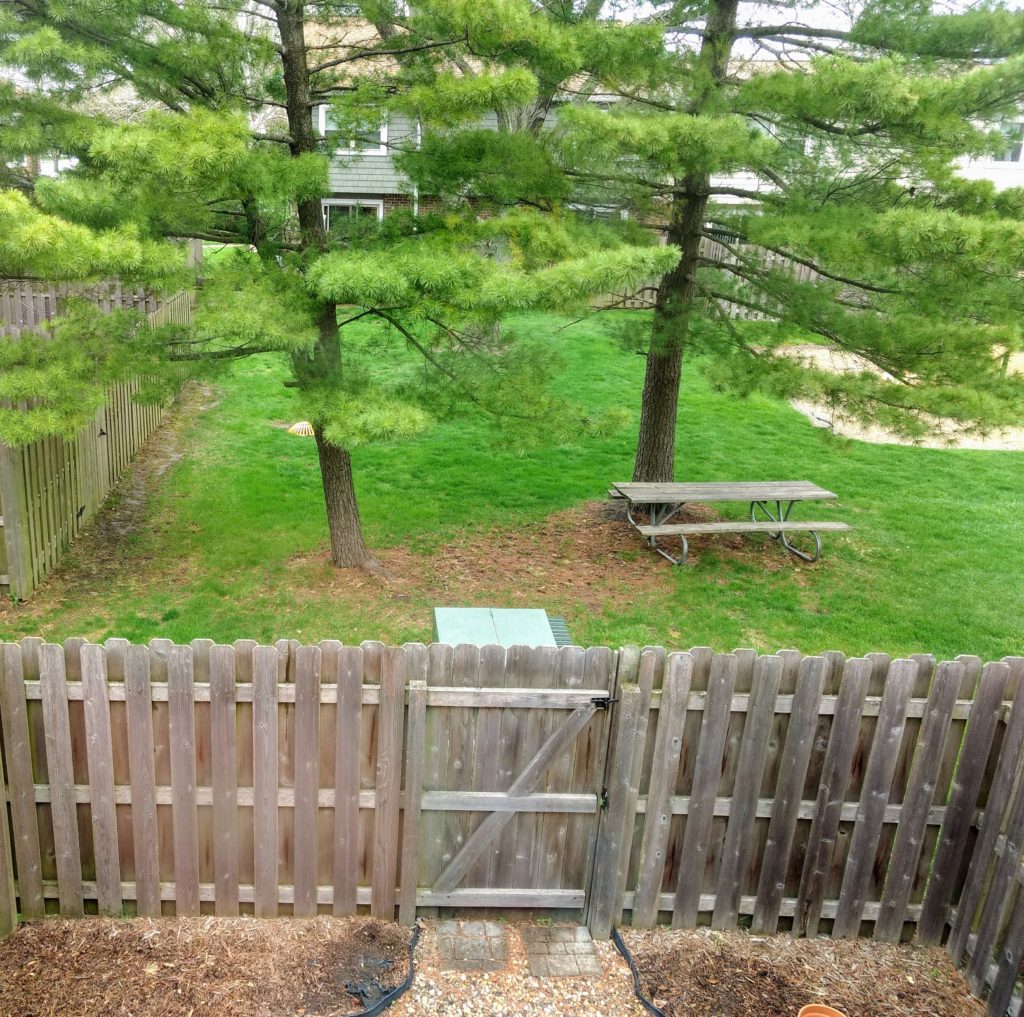Overnight rains have left the grass green like in England.
Author Archives: Philip Brewer
Goslings
Goslings. The open mouth on the goose on the right was because he was ready to start hissing at me for getting too close. I didn’t try to get any closer.
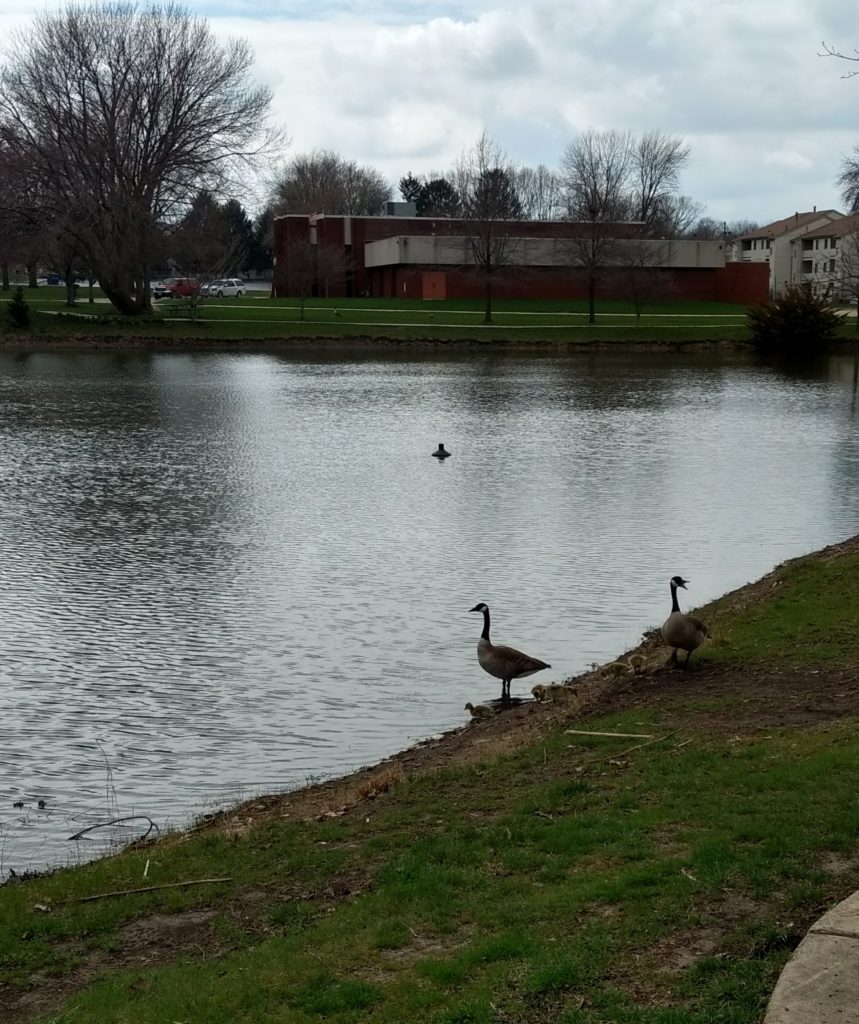
Japan House as second winter turns finally to spring

Jackie and I went to check out the cherry blossoms at Japan House.
This post is purely to share a few images:




I propose
I propose that we change the name of this season from “spring” to “second winter, with pollen.”
After a dark winter
After a dark winter and late spring, my skin looks like that of a pale grub. But not an ordinary pale grub: A pale grub in need of moisturizer.
Wallet shrinking
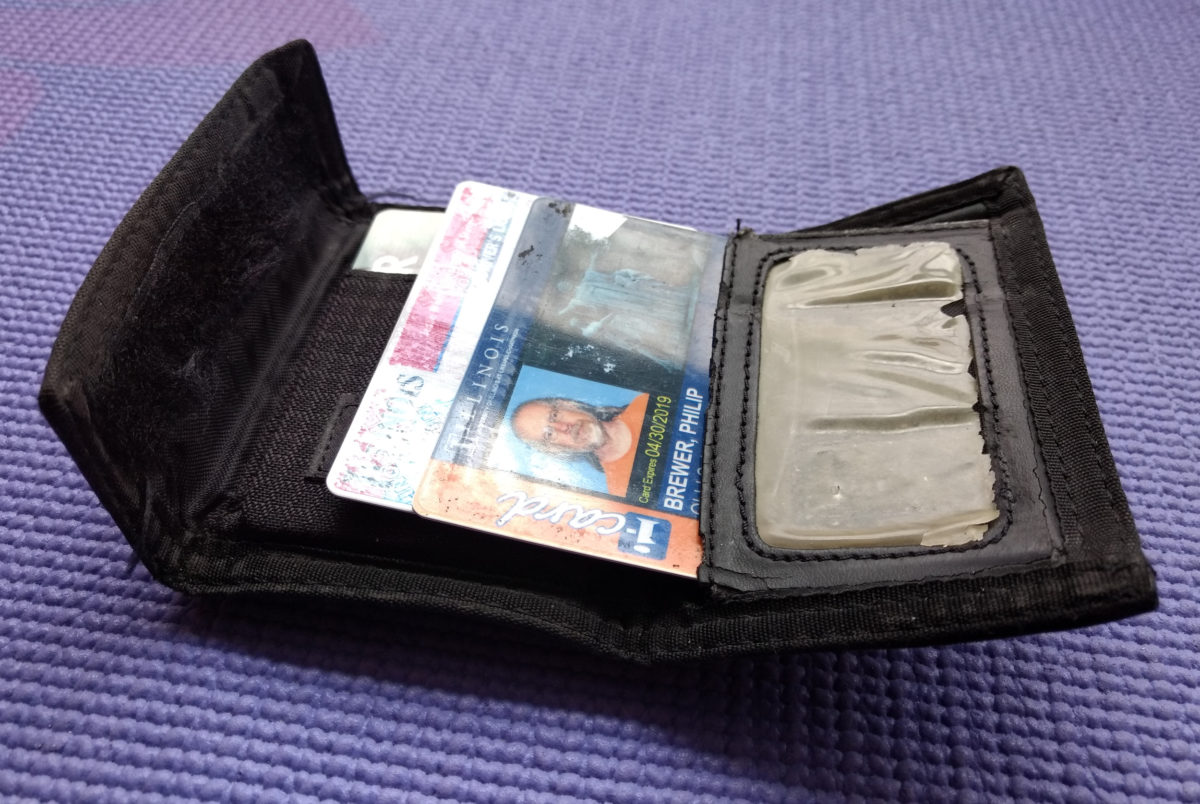
I am soon going to have to buy a new wallet. Before I do, I thought I should see if I can’t slim down what I carry, with an eye toward fitting things into one of those modern, minimalist wallets. (I have long been jealous of the folks who can get by with one.)
With that in mind, I thought I’d do a bit of an inventory of my wallet. This post is basically me thinking out loud about what I might be able to slim down.
My current wallet has a large currency pocket. I carry my cash there. I also stick receipts in here when I charge something on a credit card. Many minimalist wallets have a money clip instead, which means basically that cash stays outside the wallet. In theory I suppose that lets the wallet itself be smaller, but the clip mechanism is going to take up as much room as the money anyway, so I don’t see how you end up ahead of the game this way.
There’s an ID pocket with transparent cover. I keep my drivers license here, and in front of it I have my University of Illinois ID card. (It gets top billing because it doubles as a bus pass, so I am constantly flashing it to bus drivers. The clear transparent pocket cover is very handy for that.)
There are three overlapping pockets for cards the size of a credit card, and it is here that I feel a need for some slimming down.
The card pockets contain:
- Discover card My main credit card. I use it for most ordinary household transactions.
- MasterCard A backup card. I use it for places that don’t take Discover (which were common 25 years ago when I got the card, but are pretty rare now, except overseas). I also use it when (as has happened twice in the past ten years or so) my Discover card has to be canceled due to fraudulent use. Occasionally it has a cash-back deal that’s good enough that I end up prioritizing it over the Discover card for a month or three.
- Visa card My personal card. I use this for non-household expenses, such as lunches out, books, magazines, and toys. I also use it when I want to buy Jackie a gift.
- Busey Bank ATM card Actually a debit card, but I’ve never made a debit transaction. (Debit transactions are supposedly turned off, by setting the per-transaction limit to zero dollars, but that doesn’t seem like the sort of thing that can be relied upon to stay where you set it.)
- Schucks card Loyalty card for our local grocery store. Using the card gets me a discount on fuel at the grocery store gas station.
- AAA card For roadside assistance.
- AARP card For discounts, etc.
- Tolono Library card Lets me check books out at the Tolono Library (my address is in the Tolono Public Library taxing district). Also works at the Champaign and Urbana libraries.
- Illinois FOID card Lets me buy firearms and ammunition in Illinois.
- Health Alliance card Lets me use my health insurance at health care providers.
I have just demoted from that set my American Airlines frequent flier card, which I don’t think I need to carry around, because I don’t think I’ve booked a flight in the past ten years when I wasn’t sitting at my computer.
In a separate pocket, also just bumped out of my my wallet were:
- Social Security card (which I’ve been carrying for most of the past forty years, and which is showing some signs of wear).
- Carle Clinic card (which has my clinic number—used to be important, but nowadays they go by name and date of birth).
- Voter registration card (which in Illinois you don’t need for voting, but which lists all the precincts and districts that I’m in).
But what about all those other cards? Maybe 10 cards is not too many, but it seems like a lot.
So I think I’ll bump the following:
- The MasterCard that I use as a backup. (More specifically, I’ll swap it in for with the Discover card when it has a cash-back bonus that makes that worthwhile.)
- The FOID card. I haven’t presented to anyone in the past 10 years or so.
- The AARP card (but I think I’ll keep it in my wallet for another couple of months, because I think I claimed an AARP discount on a hotel room that I’ve booked for an upcoming trip, and might need to show it for that).
- The AAA card. I’d hate to be without it when I need roadside assistance, but thinking about that prompted me to just now install the AAA app, which has a function for displaying a card image on the phone screen. I can also keep the card in the glove box, so it would be accessible 99% of the times I’m likely to need it anyway.
That gets me down to 8 (2 ID cards plus 6 other cards), which is down in the range of many minimalist wallets (including one I have my eye on).
Okay. This has, I think, been a useful exercise. I’ll post an update if I learn at some point that I’ve made a terrible error.
The luxury of ownership
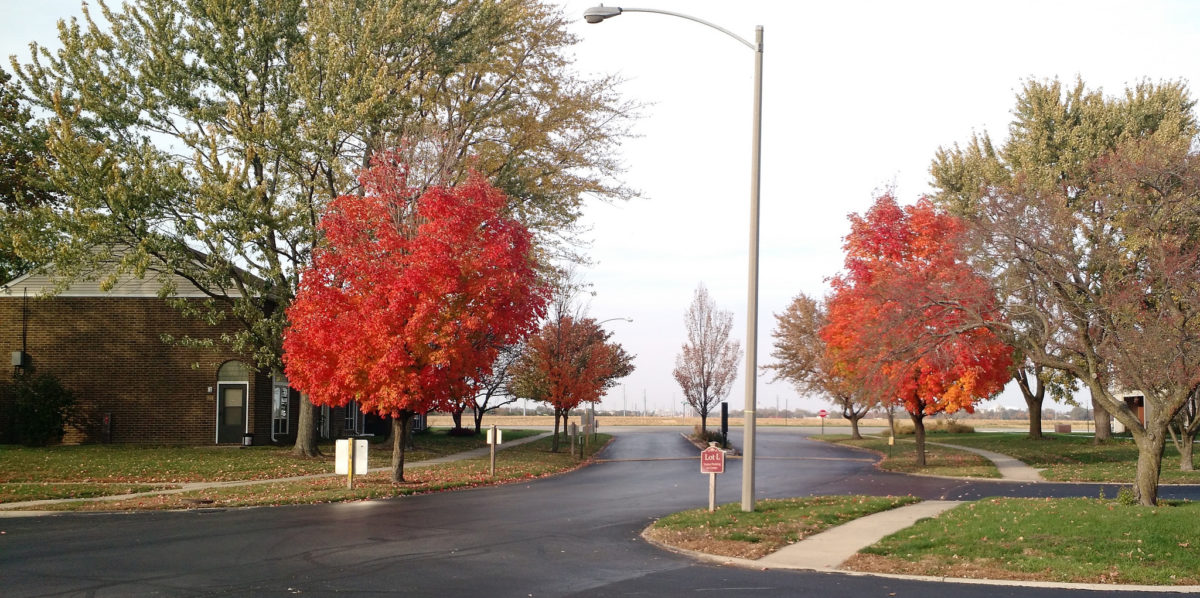
Being a member of the Winfield Village Cooperative, I’m technically a home owner and not a renter. In fact, more then technically: I’m actually a home owner.
On a day-to-day basis, living at Winfield Village is a lot like being a renter. I pay a monthly housing charge that feels a lot like a rent payment when I pay it. There’s an office staff that shows units to prospective new owners, and a maintenance staff to fix things (plumbing, appliances, etc.), and keep up the grounds—all very similar to what you could expect at an apartment. But there are differences, and most of the differences are luxuries.
There are a few differences that are financial. For example, I’m entitled to deduct my share of the property taxes and mortgage interest that Winfield Village pays.
One that I hadn’t thought of before was made especially apparent to me a few weeks ago, when a friend mentioned having to sign the next-year’s lease for his apartment, and I was reminded what an annoyance that always was.
Every year when we used to live at Country Fair, we’d get a call from the office asking if we wanted to renew our lease for the following year. Every year the rent went up a little, which was just to be expected.
More annoying was that every year we had to read the new lease. Most years it was the same or nearly the same—the office staff would go through and indicate changes—but we still felt like we ought to read it, because we’d still be agreeing to any changes that the office staff failed to point out. I think twice there was a complete re-drafting of the lease, so we had to read it all the more carefully.
Even years when it was still (mostly) the same, after we read it we then had to go through the whole thing with the office staff, because there were a dozen places we had to initial specific provisions, and then we had to sign three originals.
Although it was just an off-hand comment, my friend mentioning his lease re-signing brought up a whole bunch of stressful memories, such as deciding how to deal with the provisions that were so badly drafted as to require us to do preposterous things. (One I remember was a provision intended to reduce the chance of pipes freezing that seemed to require that we leave a trickle of water running anytime the temperature was below freezing, which would basically be all winter here in lovely central Illinois.)
There are other ways in which we are owners. We can repaint. We can buy our own appliances, or make other upgrades to our kitchen. (But we don’t have to. If our stove or refrigerator fails, maintenance will come fix it, or replace it if necessary.)
Until my friend brought it up, it hadn’t occurred to me that I haven’t had to go through the whole stressful lease-signing process for three years now! Instead of a lease, I have an occupancy agreement. That agreement hasn’t changed in three years, so I haven’t needed to re-sign. The housing charge hasn’t gone up either. And because it’s a co-op, I’ll have a vote on any major changes that do come up.
Ah, the luxury of ownership.
The opposite of dyslexia
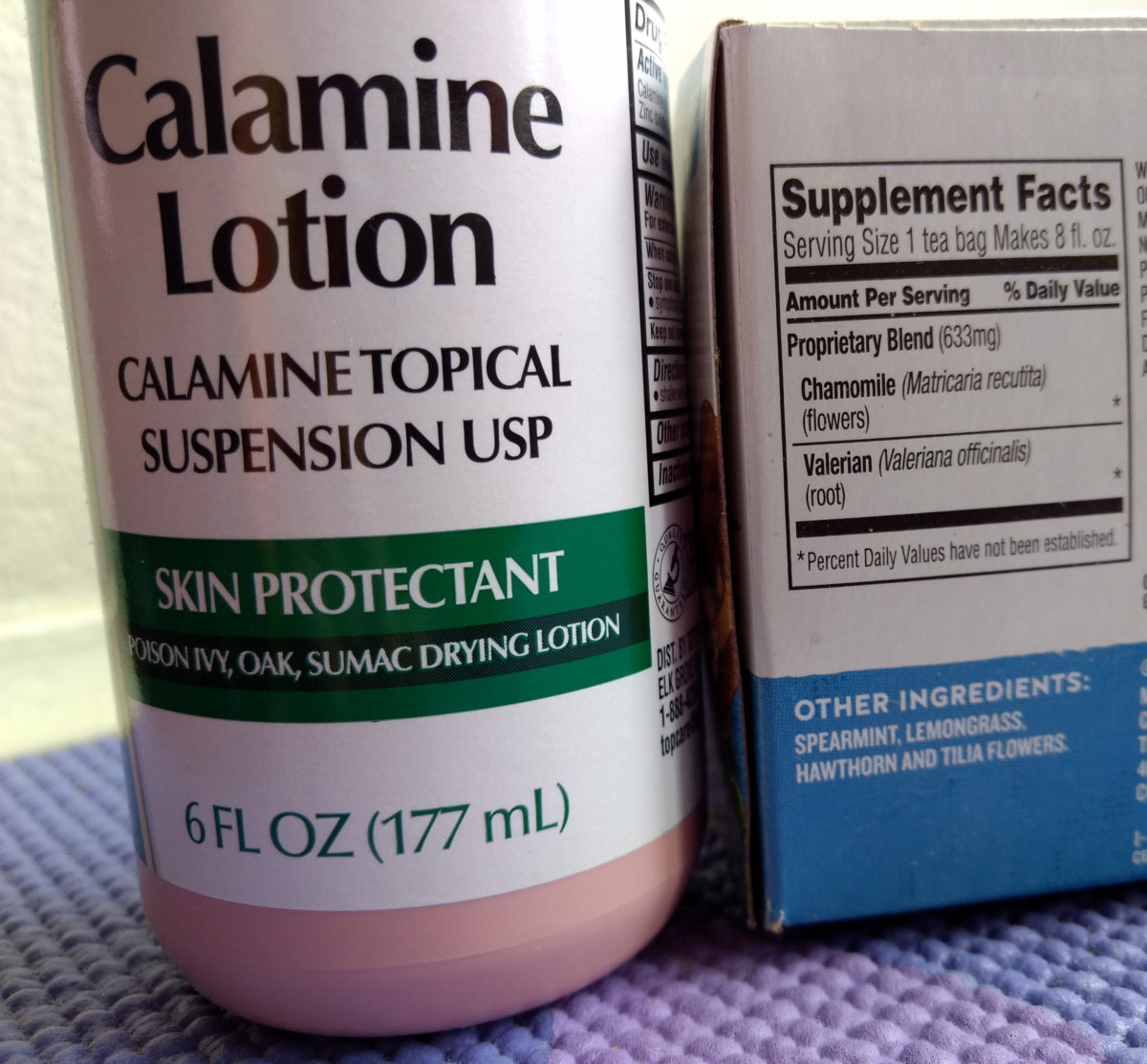
I had some initial difficulty in learning to read. My mom tried to teach me with some instructional material from a newspaper supplement, with no success whatsoever. I was a motivated learner, but the whole premise of the instructional material—which was based on phonics—made no sense to me at all.
I learned to read more or less all at once on the first day of first grade, when the teacher flipped through some big cards with words on them, together with pictures that were supposed to help indicate each word’s meaning. (I remember that “ball” was one of them, and that “go” was another.) I was stunned to realize that many of my classmates were ahead of me—they could read these words, and I could not.
But immediately, after just four or five cards, I grasped that the fundamental unit of reading was not the letter (which is what all that phonics-based stuff had implied). It was the word.
I was instantly off and running. I generally only had to be exposed to a printed word a single time to learn it. There were still a few (sufficiently frustrating to be memorable 50-plus years later) instances where adults refused to just tell me what a word was, trying to coach me through the process of “sounding it out”—something that I was never able to do—but within a day or two I was reading well above grade level and never looked back.
Even now phonics is only something I understand backwards. The spelling of English words is interesting in how it freezes in time a brief period in the midst of vast shifts in pronunciation, but I still find preposterous the idea that it’s easier to memorize sixty or eighty common spellings of the 40-odd phonemes that make up English, to learn dozens of common exceptions, and then to use that knowledge to “sound out” a word, than it is to just learn all the words.
In my experience, just learning all the words was trivially easy, while sounding a word out was virtually impossible.
I am given to understand that dyslexia is roughly the opposite of this. People with dyslexia are unable to make the jump to what is called “whole-word” reading, and are basically forced to stick with “sounding out” every word.
This is mostly important only in that I think it illustrates why it’s stupid to standardize on one way of teaching reading just because most people will learn to read just fine either way. Some people—me on the one hand, dyslexics on the other—will only be able to learn to read one way, and it’s not the same way.
Although it’s not important, I do have a recent illustrative anecdote to relate.
One side-effect of the way I perceive words is that I have no idea how they are spelled. It wasn’t until I was in college (and realized that I simply had to learn how to spell) that I bit the bullet and learned how to spell the only way that works for me: I need to memorize the list of letters that makes up a word. To this day, if I have not needed to write a word, I do not know how to spell it. For example, I did not know how to spell “Los Angeles” until after I moved there—and even then I didn’t learn it for several weeks until I had to write it down for some reason.
A related side-effect is that certain words that have similar shapes get conflated in my brain. Especially if they have somewhat congruent meanings, I will simply not realize that they are not the same word.
I mention all this now because a specific instances of it came up yesterday. Jackie had put calamine lotion on the shopping list, so I was picking up a bottle of the stuff. I read the label to see if the generic would be just as good as some brand-name version, and was surprised to see that “calamine lotion” is a specific thing: calamine topical suspension USP.
Reading the label so carefully made me realize for the first time that calamine is something different from chamomile. To my brain the words look an awful lot alike, and they’re both key ingredients in traditional remedies, so I had just slotted them in as the same thing.
Two asides here.
First, it was only while drafting this post that I realized that chamomile has that h as the second letter. As I said, if I haven’t written a word, I have no idea how it is spelled. This always made the suggestion that I should “look it up in the dictionary” to find the spelling especially frustrating. I remember attempting to follow that instruction once and then coming back to my dad some ten or twenty minutes later and saying that I had looked at every word in the dictionary that started with the letters “ax-” and yet had been unable to find “accelerate.”
Second, the brand-name stuff, because it doesn’t follow the USP formulary, isn’t even calamine lotion; it’s just some skin protectant lotion with a similar color that happens to have calamine in it. Who would want that?
Achievement unlocked: One-arm hang
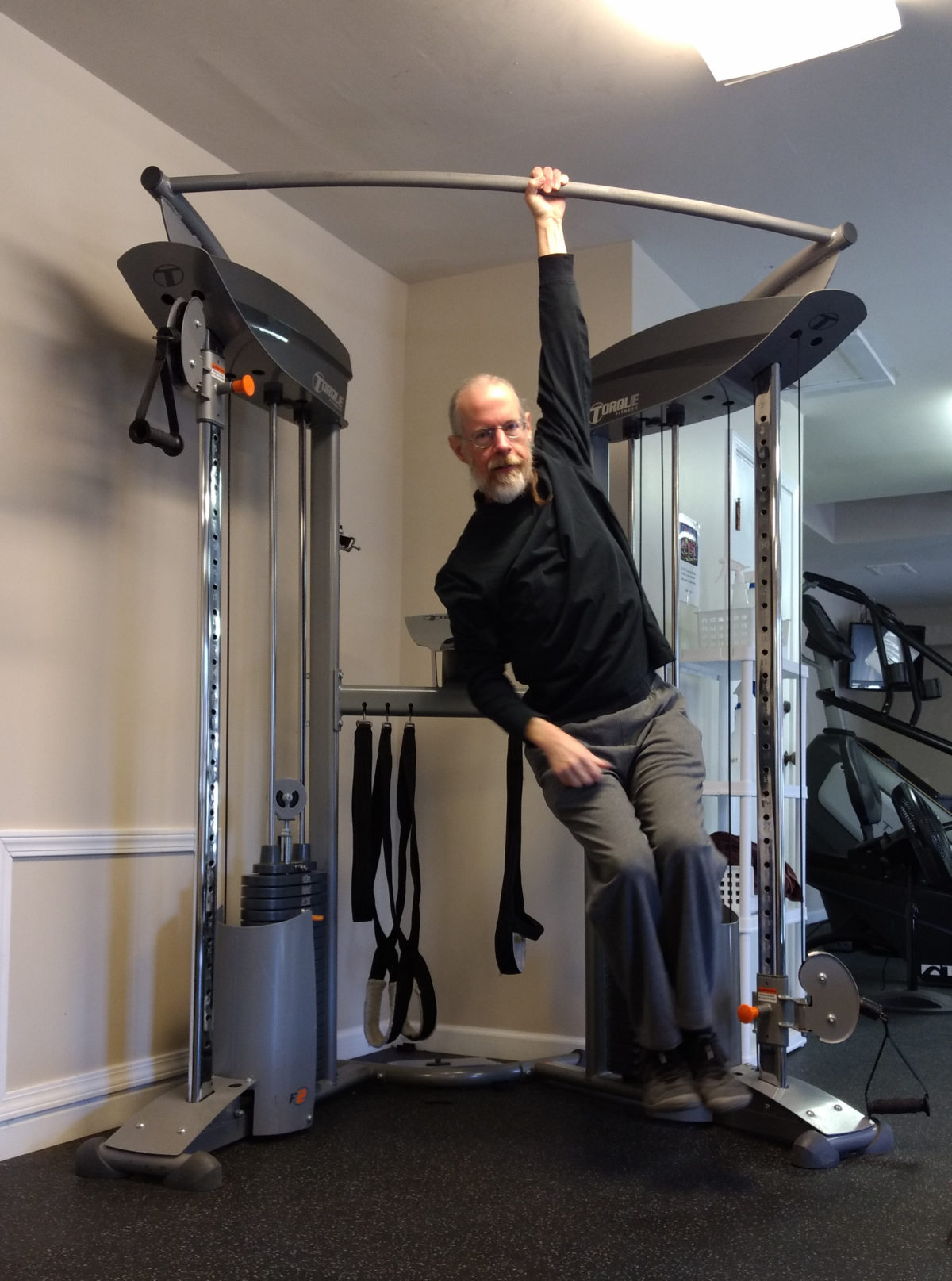
In the Runner’s Rehab class I’ve been taking, which is mostly lower-body alignment, mobility, and strength, Ashley usually includes a few minutes of upper-body work as a bit of a break. We’ve done hanging from the high bar, playing with parallel bars, playing on a climbing rope, etc.
One time when we were hanging, Ashley asked if I could hang from one arm, and I said, “I don’t know. I haven’t tried in a long time. I can sort-of brachiate on the monkey bars, so I guess I can hang for at least a moment….”
So I figured I’d try, and: Wow! I can hang from one hand!
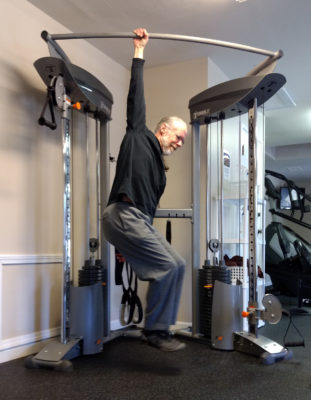
I haven’t done it for time yet. When I hang from one hand my body turns out. I haven’t yet gotten that under control enough to hang for very long without feeling like I’m going to twist my shoulder.
Still, it give me a feeling of considerable satisfaction to be able to hang from one hand, even if just for a few seconds.
I don’t think this twisting is really a strength issue; more a motor-control/patterning issue. It shouldn’t take me long to get to the point where I can control the twist, at which point I’ll be able to hang for as long as my hands are up to it, and I think they’ll be up to a reasonable amount of one-arm hanging pretty quickly.
What good is a militia anyway?

The reason that a well-regulated militia appealed to the founding fathers was that they hoped it would eliminate the need for a standing army.
If you had the whole body of young adult men armed and trained, it was hoped you could raise an army very quickly in case of need. If that were true, Congress could insist that the standing army be run down to just a cadre of specialists and officers. Then, in the event that you needed an army—because you were invaded, or needed to invade someone else—you could mobilize (i.e. draft) the militia to fill the ranks with soldiers.
The founders knew perfectly well that a government with a standing army could not be resisted by the people, even if the people were armed. A standing army was always going to be more disciplined, more highly trained, and better equipped than a militia could possibly be.
So, the purpose of the militia was to eliminate the need for a standing army. If you could make a militia work that way—quickly go from a bare cadre to a fully mobilized army simply by calling up the militia—then you’d be in a position where Congress could insist that the the army in fact be a bare cadre, meaning that neither presidents nor generals could use the army until Congress actually raised one.
It’s an appealing idea, particularly to someone like me who is very doubtful about trusting presidents or generals. Sadly, the evidence is pretty good that it doesn’t work.
This was clear even before the sorts of modern, high-tech weapons and other equipment that take extensive training to learn how to use, and then nearly constant on-going training to preserve the capability. It took five years to go from a 16,000-man army to a 1,000,000-man army during the civil war. The ramp up for WW I was quicker but also smaller—manpower grew by 16 times in two years rather than 62 times in five years, but that was from a much larger base—basically, a smallish standing army, not merely a cadre waiting to be filled out.
The experience of the U.S., at least as far back as the civil war, is that fielding an army by mobilizing a militia simply can’t happen fast enough to respond to an enemy with a standing army. (The experiences of Switzerland mobilizing to resist a possible Nazi invasion and Finland mobilizing against the Soviet Union at around the same time are interesting, but do not I think make the contrary case.)
Given all that, I’d have to say that a militia is pretty much obsolete, and has been for a couple of centuries at least.

